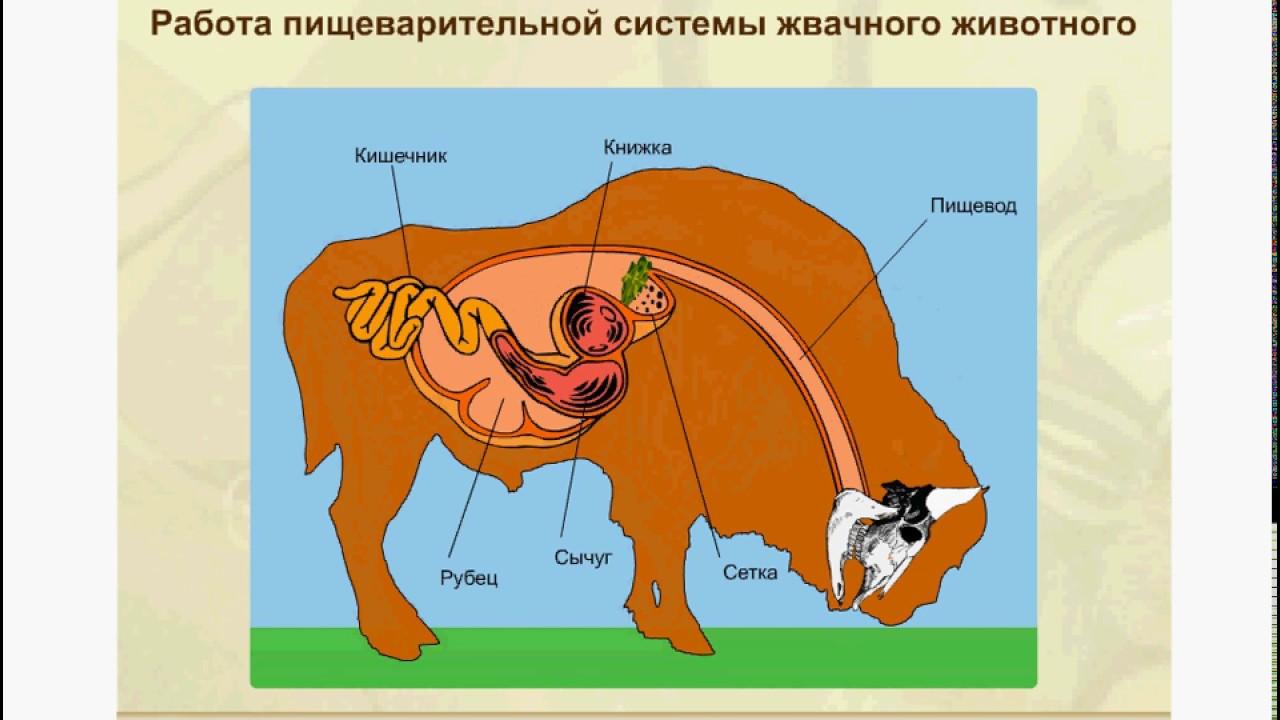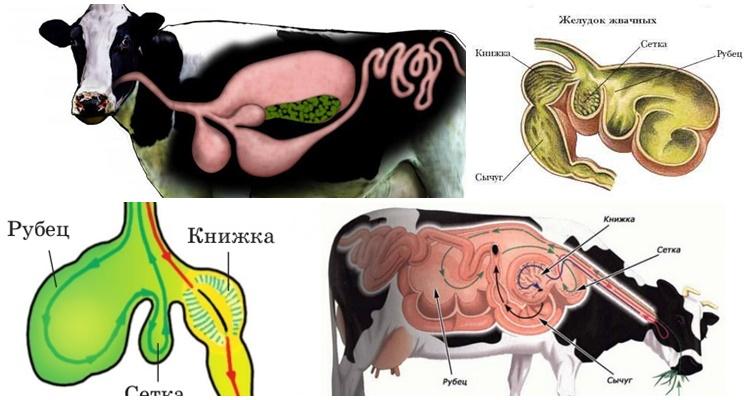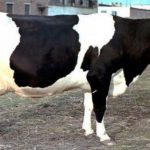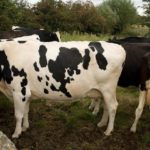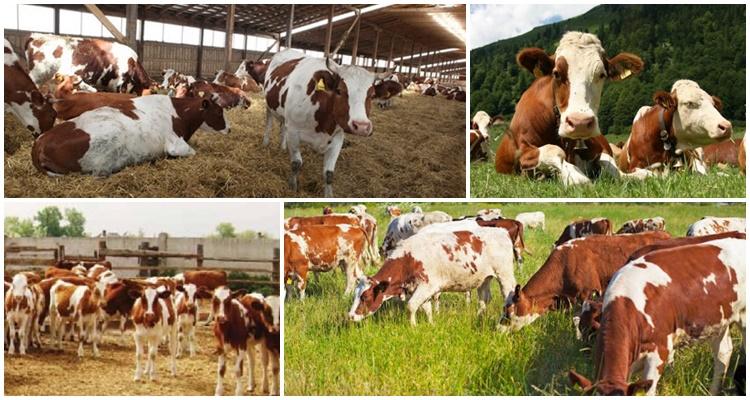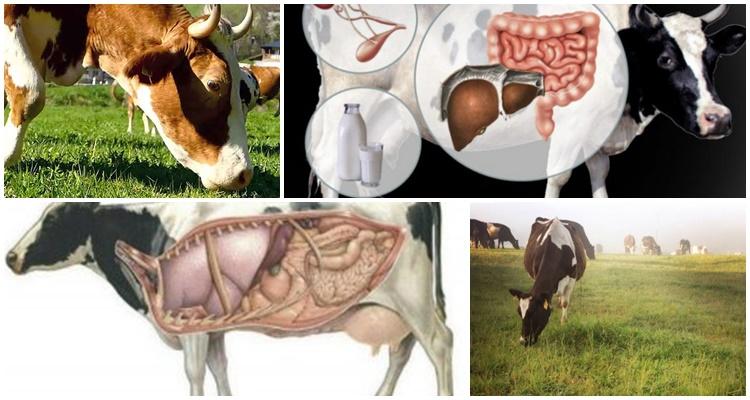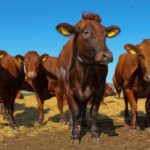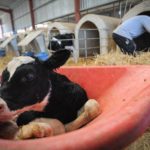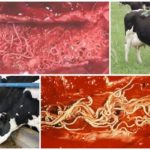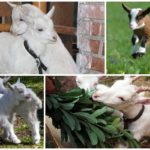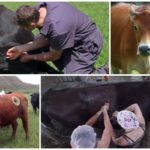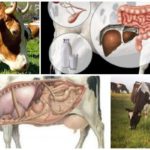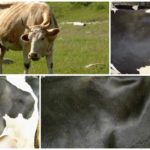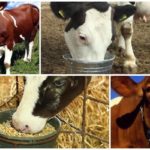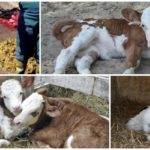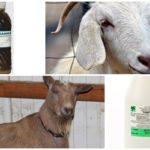Raising animals on your own property comes with many challenges. To fatten their pets and keep them healthy, owners have to take into account the characteristics of each species. The keeping of ruminant animals is directly related to the structural features of the stomach. The multichamber stomach consists of several sections. To properly plan the diet, the owner must know the basic anatomical structure of the main organs.
Structure of the cattle stomach
The stomach of ruminant animals is a multi-chambered organ. The complex structure ensures the capture and processing of food. The peculiarities of the anatomical structure make it possible to obtain the nutritional elements necessary for cattle from plant materials. The organs of prehension in ruminants are the lips, teeth and tongue. Further digestion is carried out sequentially, that is, food alternately passes through all sections of the proventriculus before entering the true stomach.
Scar
One of the sections of the stomach, which is called the proventriculus. This section occupies most of the abdominal cavity and is the largest organ in size. In cows, the rumen stretches 100-300 liters. Sheep have a rumen volume of 15 to 23 liters. The scar consists of a curved shaped sac with developed muscles. The purpose of the rumen is the primary processing of incoming food. One of the names of the rumen is the fermentation chamber. Here, up to 75 percent of incoming feed is processed.
Net
The mesh in ungulates is a section that is designed to filter primarily processed food. The mesh holes allow only those pieces that are partially processed in the rumen to pass through. The wall of the mesh is lined with mucous membrane and is a bag with a rough surface.
Book
The department looks like a leafed book. Due to the presence of special sweets, it is in constant motion. “Flipping” the incoming pieces of food allows you to mix elements with secreted enzymes and absorb the maximum amount of fiber. Insufficiently processed pieces are sent to previous departments for more thorough chewing.
Abomasum
The fourth section of the stomach, which is the true stomach. Digestion on the surface of the rennet is carried out by breaking down pieces of food with acid and enzymes. The abomasum is lined with soft epithelium from the inside. The folds of the cavity produce pancreatic juice. Due to the influence of juice, acids and enzymes, the process of assimilation of the necessary elements begins.
Undigested food moves towards the cecum and rectum and then moves towards the anus for exit.
Physiological phenomena in the digestion of ruminant mammals
The digestive system of a ruminant animal is designed to constantly digest food. This process starts from the moment the food is captured by the tongue and lasts several hours until the moment when processing begins inside the abomasum.
First stage
The complex structure of the multi-chamber stomach allows the processing of plant foods with maximum benefit for the animal. The forestomachs have a unique purpose. The initial stage begins with the throwing of food into the rumen.
Conditions that allow efficient processing of food in the rumen:
| Condition | Description |
| Lack of oxygen | Prevents bacteria from multiplying too quickly |
| Fever | Softens food, making it suitable for pushing through wall holes |
| Humidity | Helps soften fiber, moistens pieces, making them more pliable for further digestion |
Reference! Processing in the rumen takes up to 70 minutes. Most of the plant material becomes a chewing gum product.
Definition of the phenomenon
Chewing is a phenomenon where captured material from the rumen is returned repeatedly to the oral cavity. This feature is aimed at finely chopping food.The reflex mechanism involves nature's contraction of fibers and pushing the chewing gum from one section to another until the product takes the shape necessary to enter the mesh.
The chewing period lasts 1 hour. Then comes a period of rest, but in the normal state of the animal, stomach contractions persist. The result of contraction is the production of saliva. After the rest period ends, the chewing process reactivates. Chewing gum is an important phenomenon in the complex digestive system.
Information! Chewing gum does not stop when night falls.
Further processing of food components
The digestive system of artiodactyls is designed to digest large amounts of plant and protein food. The digestion process continues on the surface of the book. Between the “leaves,” the incoming particles are additionally fermented, lose moisture, and are enriched with isolated animal protein.
Glands
In artiodactyl animals, the pancreas, which produces the juice necessary for digestion, is located along the duodenum. The lobed structure ensures the supply of necessary products of activity to the stomach.
Common pathologies
Pathologies of the digestive system lead to changes in the general condition of animals. Some disorders lead to complex irreversible diseases.
Bloating
Bloating, or tympany, is a dangerous condition that leads to blockage of the esophagus. Causes of bloating:
- sudden change in diet;
- eating large pieces;
- eating foods that cause gas.
Bloating is diagnosed when the animal refuses to eat. The abdomen doubles in size. Cows lack rumination and become restless or lethargic.Severe manifestations are characterized by the development of shortness of breath, paleness of the mucous membranes, and an increase in normal temperature.
To help the animal, the following measures are taken:
- stimulate the stomach with medications (“Timpanol”, “Magnesia”, activated carbon);
- large pieces are removed from the esophagus using a probe;
- in case of complications, the scar is perforated with a trocar.
Stop
Stopping the stomach or lack of contractions is a serious pathology that disrupts the general condition of the body. The reason for the stoppage is complete blockage of the esophagus. This happens due to improper feeding. Stopping indicates that the animal’s diet is not balanced; concentrated feed predominates.
Measures to combat the stop:
- gastric lavage;
- scar massage;
- drinking hellebore tincture, saline solution, vodka with oil.
Zaval
Book jam entails the shutdown of other departments. This pathology occurs due to the predominance of dry, grain or concentrated feed. The reason may be the presence of sand or dirt in the food. The blockage leads to a complete cessation of stomach function, so the symptoms of the phenomenon are similar to stoppage. Measures to combat the blockage:
- gastric lavage;
- consumption of hellebore tincture, vegetable oil, vodka, moonshine;
- scar massage.
Advice! A blockage can be diagnosed by puncturing the stomach. If the needle insertion is difficult, the diagnosis can be considered confirmed.
Injury
The injury is associated with the consumption of foreign objects. There are known cases of animals swallowing nails, wire, pieces of lime, wood chips, and sharp stones. These objects can pierce the walls of the scar, break through the mesh, or pierce nearby organs.If ingestion of foreign materials is detected, immediate action must be taken. Signs of a dangerous condition:
- complete loss of appetite;
- neck stretching;
- attempts to swallow;
- adoption of unnatural poses by the animal;
- possible increase in body temperature.
The way out of the situation is gastric lavage. If metal objects are swallowed, a magnetic probe is used to examine the esophagus. If an object is stuck in the stomach, the animal undergoes surgery. It can be difficult for the animal to emerge after the intervention, so it is taken to slaughter.
Trauma is a major problem faced in cattle management. Regular cleaning, maintaining cleanliness in housing areas and monitoring the quality of feed are considered preventive measures.

